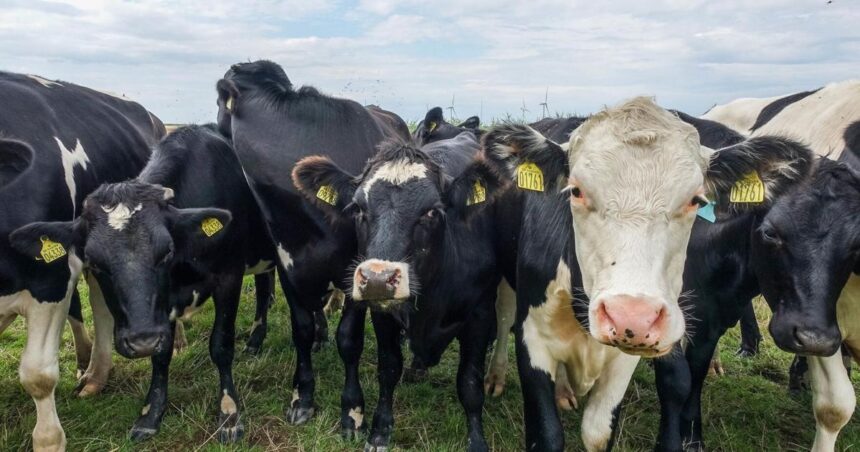Raise your hand if you knew that Congress is debating a bill this summer that could slow the pace of climate change, produce cleaner drinking water, restore habitat for endangered wildlife and improve the American diet. No?
It’s the farm bill, the massive food and agriculture policy vehicle that Congress updates every five years (in theory), and, frankly, most people don’t follow it closely. The sprawling legislation is simultaneously so parochial and complicated that even most lawmakers just leave it up to the experts. That’s a shame, because this year Washington has a chance to update the farm bill in a way that takes steps toward healthier diets and a healthier planet.
When Franklin Delano Roosevelt laid the foundations of modern farm policy in the 1930s, rural America was in crisis: The Dust Bowl had blown away thousands of farms and commodity prices had collapsed. Federal intervention did a lot of good for destitute farmers and the nation.
People are also reading…
But today the nation has different challenges: climate change, polluted waters, devastating floods, endangered birds and pollinators. Since farmers control what happens on millions of acres of land across the middle of the continent, they’re in a position to address these challenges — and Congress is in a position to give them the right incentives.
Consider soil and water conservation. In 1985, Congress created a landmark project called the Conservation Reserve Program that paid farmers to take vulnerable acres out of production and plant them with grasses and trees. It was an astonishing success — soil erosion plummeted, wildlife rebounded.
But farmers chafed at the idea of getting paid for idling land — and some taxpayers did, too. Then came a brilliant idea: Pay farmers for conservation practices on working land, using tillage practices such as cover crops and no-till cultivation.
These have proven benefits in reducing soil erosion, keeping farm chemicals out of lakes and streams and cutting farmers’ use of diesel fuel and petroleum-based fertilizers that contribute to climate change. The core elements, the Conservation Stewardship Program and the Environmental Quality Incentives Program, are so popular that farmers are applying at three times the rate of available funding in states like Minnesota. At the very least, this year’s farm bill should give these efforts a funding boost.
Then there’s crop insurance, now by far the largest safety net in the federal farm bill. Crop insurance is probably still a good idea, since farmers are as vulnerable as ever to extreme weather and volatile commodity prices. But The current system has the effect of tying farmers to a few favored crops such as corn, soybeans and wheat, while rewarding over-planting and overproduction. Congress should tighten up the program’s conservation compliance enforcement and adjust the rules so it’s easier for farmers to plant a diverse, healthy mix of crops such as oats, barley and alfalfa and even fruits and vegetables.
It should also build on an innovative program called Whole Farm Revenue Protection, which gives farmers — especially young, innovative farmers — more freedom to plant what they want. And since public subsidies cover about 60% of the cost of crop insurance, why not use those subsidies to achieve public benefits? Give farmers premium discounts if they adopt proven practices that reduce erosion, improve wildlife habitat, sequester carbon and reduce polluted field runoff.
In 2022, with the Inflation Reduction Act, the Biden administration introduced an idea called “climate-smart agriculture,” that directed billions of dollars into the underfunded conservation programs. A key struggle on Capitol Hill heading into the fall is that the House farm bill would redirect much of that money to conventional farm supports, a very bad idea, while the Senate bill would protect the climate-smart approach.
If all this seems like an environmental wish list that urban liberals want to impose on hardworking farmers, that’s not true. Innovative and influential farmer-led groups such as Practical Farmers of Iowa and Minnesota’s Land Stewardship Project have championed crop diversity and conservation farming for years. …
With hundreds of farmer members, they have demonstrated that conservation practices help the land and make farms more climate resilient. “Farmers don’t all agree on climate change politics, but they do agree that extreme weather events are becoming more frequent and more severe,” Minnesota Farmers Union President Gary Wertish told an editorial writer. “We’re interested in things we can do to address that, while also helping cash-flow our farms.”
Apart from conservation, Congress should also take steps this year to address the extraordinary concentration of today’s food industry. Farming has always been an uneven playing field, with thousands of small individual producers going up against big railroads, big banks and big grain companies. It has only gotten worse in recent decades: Today a handful of global corporations control the production of seeds and farm chemicals and a handful of grain and food companies control the markets for a farmer’s crops.
As antitrust expert Austin Frerick pointed out in his excellent book, “Barons,” this has the effect of perpetuating a food system built on chemical-intensive corn and soybeans and highly processed consumer foods. The Minnesota Farmers Union has proposed stronger enforcement of federal antitrust law so that farmers have more flexibility and receive a bigger share of the nation’s food dollar — and Congress should listen.
The historian Geoff Cunfer has observed that, over the centuries, agriculture is the single biggest interaction that humans have with the natural world — and by extension, the biggest opportunity to heal some of the wounds that humans have wrought on the planet. “The farm bill has a bigger impact on our landscape in the Midwest than any other government program, by far,” Brian DeVore of the Land Stewardship Project said. “It could be such a force for good.”





